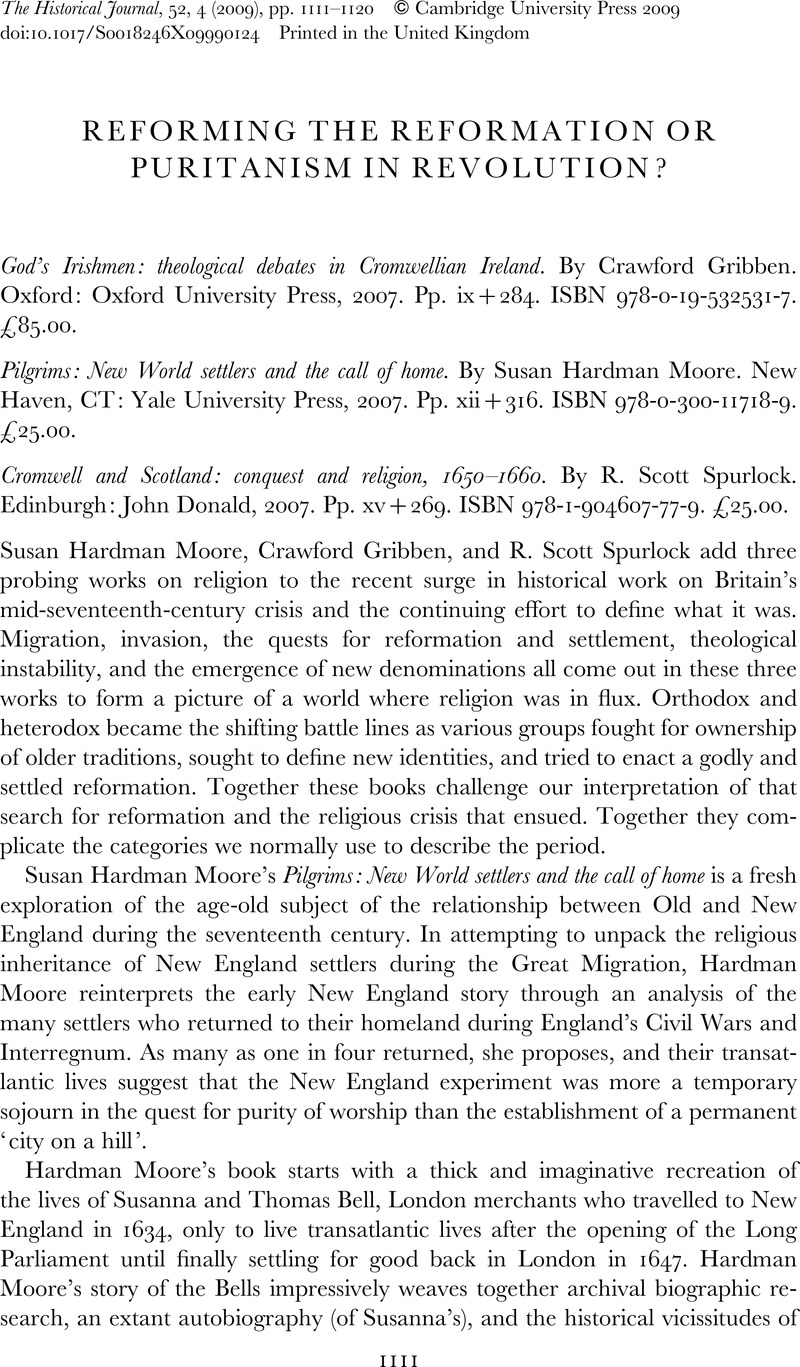No CrossRef data available.
Article contents
REFORMING THE REFORMATION OR PURITANISM IN REVOLUTION?
Review products
Published online by Cambridge University Press: 06 November 2009
Abstract

Information
- Type
- Review Articles
- Information
- Copyright
- Copyright © Cambridge University Press 2009
References
1 Nuttall, Geoffrey, ‘Congregational commonwealth incumbents’, Transactions of the Congregational Historical Society, 14 (1943), p. 155Google Scholar.
2 Davis, J. C., ‘Radicalism in a traditional society: the evaluation of radical thought in the English commonwealth, 1649–1660, History of Political Thought, 3 (1982), pp. 193–213Google Scholar; Condren, Conal, ‘Radicals, Conservatives and Moderates in early modern political thought: a case of the Sandwich Islands syndrome?’, History of Political Thought, 10 (1989), pp. 525–42Google Scholar; Glenn Burgess, ‘Radicalism and the English Revolution’, in Burgess and Matthew Festenstein, eds., English radicalism, 1550–1850 (Cambridge, 2007), pp. 62–86.
3 Edward Underhill, Records of the Churches of Christ gathered at Fenstanton, Warboys and Hexham, 1644–1720 (London, 1854), pp. 317–18.
4 Hughes, Ann, ‘Public disputations, pamphlets and polemic, 1649–60’, History Today, 41 (1991), pp. 27–33Google Scholar; Ann Hughes, ‘The pulpit guarded: confrontations between Orthodox and radicals in revolutionary England’, in Anne Laurence, W. R. Owens and Stuart Sim, eds., John Bunyan and his England, 1628–1688 (London, 1990), pp. 31–50.

